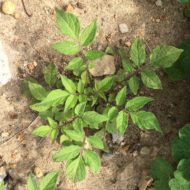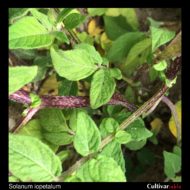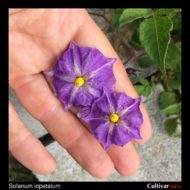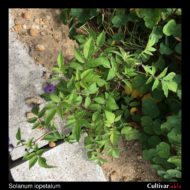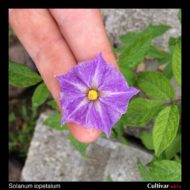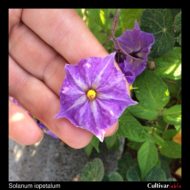Solanum iopetalum
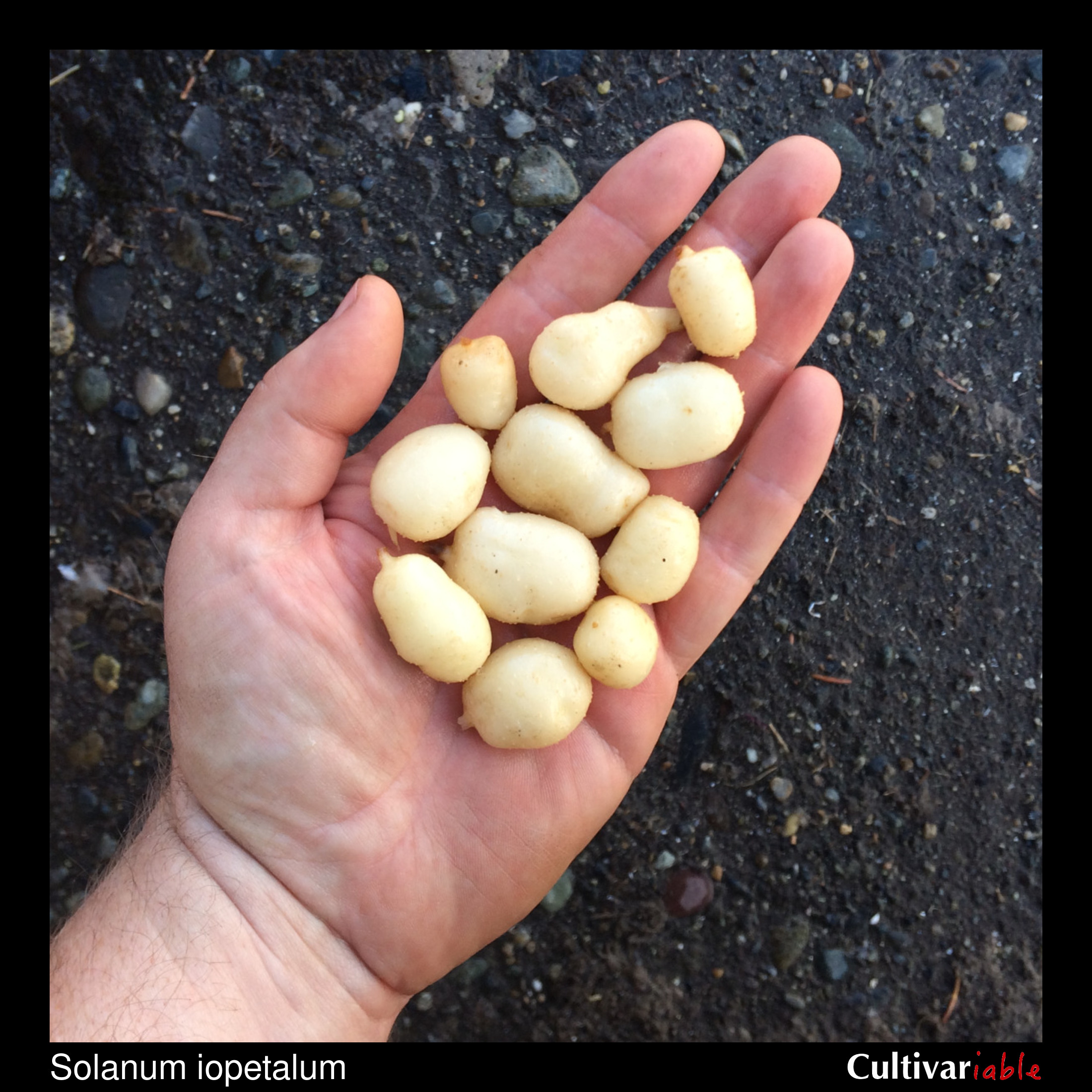
| Common Names | |
| Code | iop |
| Synonyms | S. brachycarpum, S. oxycarpum var. brachycarpum, S. verrucosum var. iopetalum |
| Clade | 3+4 |
| Series | Demissa |
| Ploidy | Hexaploid (6x) |
| EBN | 4 |
| Tuberization Photoperiod | Short Day |
| Self-compatibility | Yes |
| Nuclear Genome | ABP |
| Cytoplasmic Genome | M, W, D |
| Citation | Hawkes: Bull. Imp. Bur. Pl. Breed. Genet., Cambridge 30. 1944. |
Description
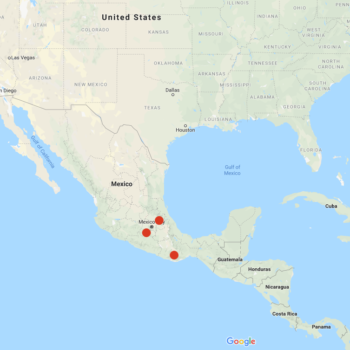
Solanum iopetalum is a widespread species from central to southern Mexico. Plants roughly one to two feet tall. Flowers white to violet. Berries conical.
The specific epithet, iopetalum, means “purple petalled,” referring to the generally low growing habit of this species. It is formed from the Greek words “ios,” for “purple,” and “petalon,” for “petal.” While there is no completely standardized pronunciation for scientific names, the most common way to pronounce this species is probably so-LAY-num eye-oh-PET-uh-lum.
Resistances
This species can survive frosts down to 26 degrees F (-3.5 C) (Li 1977, as S. brachycarpum). Vega (1995) found that this species is less frost tolerant than domesticated potato.
| Condition | Type | Level of Resistance | Source |
|---|---|---|---|
| Alternaria solani (Early Blight) | Fungus | Not resistant | Jansky 2008 |
| Drought | Abiotic | Somewhat resistant | Machida-Hirano 2015 (as S. brachycarpum) |
| Frost | Abiotic | Somewhat resistant | Machida-Hirano 2015 (as S. brachycarpum) |
| Globodera pallida (Pale Cyst Nematode) | Invertebrate | Not resistant | Castelli 2003 |
| Globodera rostochiensis (Potato Cyst/Golden Nematode) | Invertebrate | Somewhat resistant | Castelli 2003 |
| Heat | Abiotic | Somewhat resistant | Machida-Hirano 2015 (as S. brachycarpum) |
| Meloidogyne spp. (Root Knot Nematode) | Invertebrate | Somewhat resistant | Machida-Hirano 2015 (as S. brachycarpum) |
| Pectobacterium carotovorum (Blackleg/Soft Rot) | Bacteria | Not resistant | Chung 2011 |
| Phytophthora infestans (Late Blight) | Fungus | Resistant | Gonzales 2002 |
| Phytophthora infestans (Late Blight) | Fungus | Not resistant | Bachmann-Pfabe 2019 |
| Phytophthora infestans (Late Blight) | Fungus | Some resistance | Karki 2020 |
| Potato Virus X (PVX) | Virus | Somewhat resistant | Machida-Hirano 2015 (as S. brachycarpum) |
| Potato Virus Y (PVY) | Virus | Somewhat resistant | Cai 2011 |
| Synchytrium endobioticum (Wart) | Fungus | Somewhat resistant | Machida-Hirano 2015 (as S. brachycarpum) |
Glykoalkaloid content
Sarquis (2000) measured the total glycoalkaloid content of tubers of an accession of this species at 76.2 mg / 100g, a level almost four times the safety limit.
Images
Cultivation
I have found seeds of this species easy to germinate using the standard conditions for S. tuberosum. The USDA potato genebank has observed that germination of some accessions of this species is inhibited by GA3 (Bamberg 1999). Bamberg (2018) found that alternating temperatures decreased germination in this species.
Towill (1983) found that seeds of this species stored at 1 to 3 degrees C germinated at 100% after 19 years.
Accessions Evaluated
The following accessions were examined to prepare this profile. I have evaluated 4/58 accessions currently available from the US potato genebank.
PI 251721
Poor germination, but strong seedling growth.
PI 498021
Intermediate and irregular germination and strong seedling growth.
PI 558427
Intermediate germination and strong seedling growth.
PI 607854
Poor, irregular germination and slow seedling growth.
Breeding
Crosses with S. tuberosum
| Female | Male | Berry Set |
Seed Set | Ploidy | Germ | Source |
|---|---|---|---|---|---|---|
| S. iopetalum (as S. iopetalum and S. brachycarpum) | S. tuberosum | Moderate | Moderate | Jackson (1999) | ||
| S. tuberosum | S. iopetalum | Low | High | Jackson (1999) | ||
| S. tuberosum | S. iopetalum (as S. brachycarpum) | None | None | Jackson (1999) |
Crosses with other species
Watanabe (1991) found that 9.3% of varieties of this species produced 2n pollen and Jackson (1999) found 2-15%, which would be effectively dodecaploid and 8EBN.
| Female | Male | Berry Set |
Seed Set | Ploidy | Germ | Source |
|---|---|---|---|---|---|---|
References
Solanum iopetalum at Solanaceae Source

